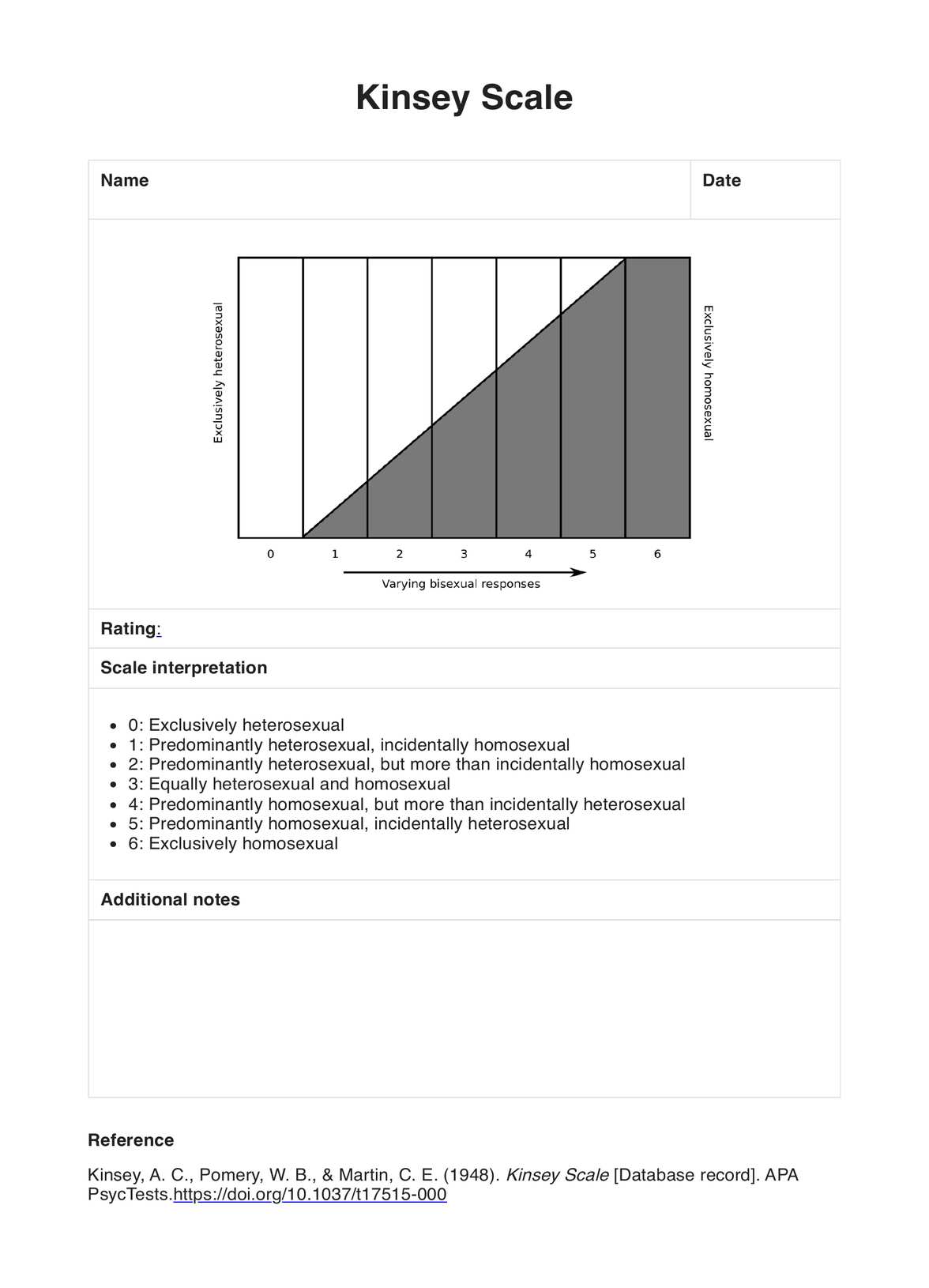Researchers, psychologists, sociologists, and sexologists are the primary users of the Kinsey Scale. They may use it to explore patterns of sexual orientation, understand the diversity of human sexuality, and study changes in sexual orientation over time. Additionally, the scale may be employed in clinical settings to assist individuals in understanding and expressing their sexual orientation.

Kinsey Scale
Get access to a free Kinsey Scale PDF template and example. Learn more about this scale and its six-point rating system.
Use Template
Kinsey Scale Template
Commonly asked questions
You can use the Kinsey Scale to measure and understand the continuum of sexual orientation. It can be used in studies, surveys, and assessments to gather information about an individual's sexual attractions and experiences.
The Kinsey Scale asks individuals to rate themselves from 0 to 6, with 0 being exclusively heterosexual, 6 being exclusively homosexual, and 3 representing bisexuality.
EHR and practice management software
Get started for free
*No credit card required
Free
$0/usd
Unlimited clients
Telehealth
1GB of storage
Client portal text
Automated billing and online payments











